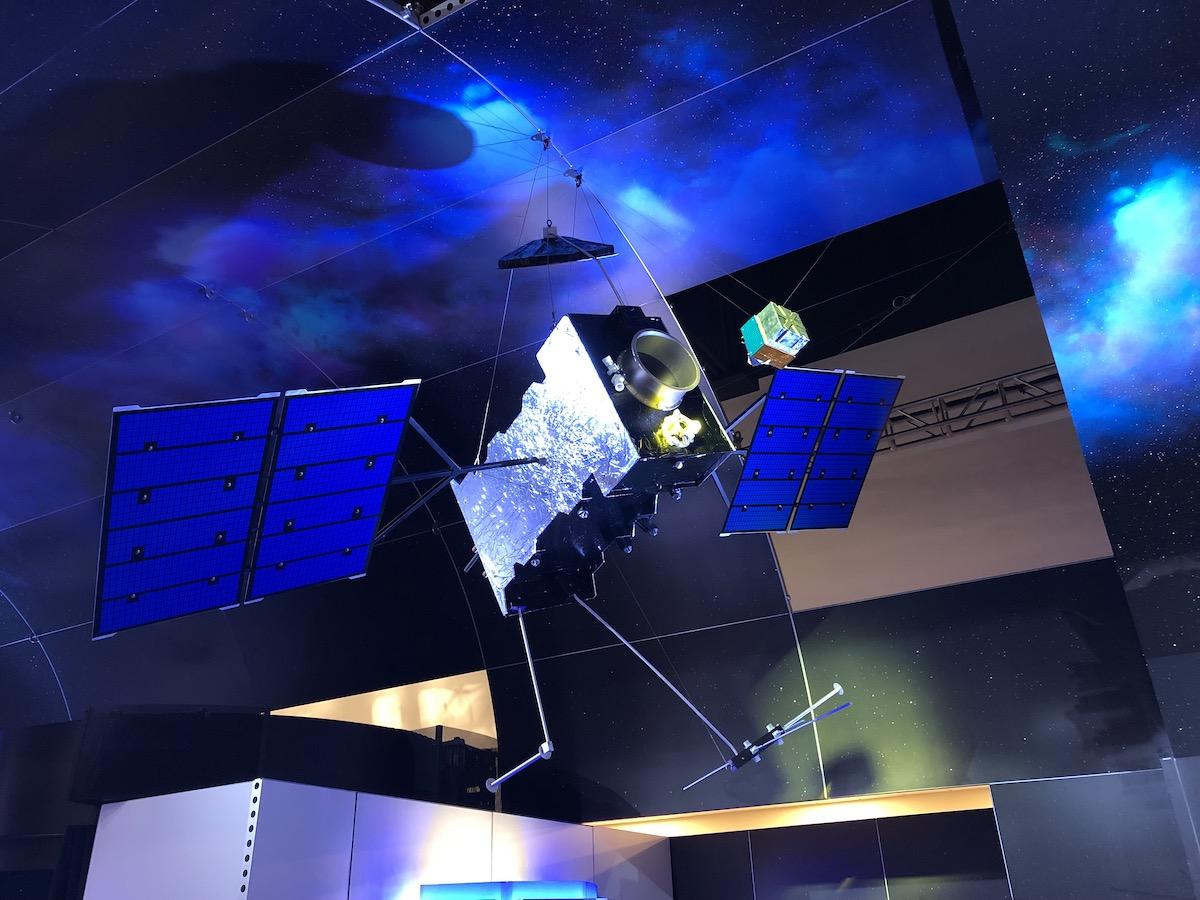
COLORADO SPRINGS—Parts for the first batch of Lockheed Martin’s advanced GPS IIIF Follow On space vehicles (SV) are arriving at the company’s facility in Littleton, Colorado, paving the way for assembly of the initial satellite to start before 2023.
“We are going to start populating our Pathfinder vehicle at the end of this year,” says Dave Hatch, Lockheed Martin’s GPS IIIF program management director. The GPS IIIF build off the current generation GPS III variant, five of which are on orbit with a further three complete and available for launch. SV09 is expected to finish testing later this year, while SV10—the final GPS III—will be completed around mid-2023.
The updated GPS IIIF standard “brings 60 times more anti-jam capability than the current legacy system (Block II) today with our regional military protection (M-code) spot beam,” Hatch says. “We also brought in the laser retroreflector array that allows us to more precisely track and measure where the vehicle is. That matters because when we know exactly where the vehicle is it can translate into better position on the ground.” The IIIF will also incorporate an emergency transponder location capability via a search and rescue payload.
Production of the initial GPS IIIF batch includes four vehicles ordered under a U.S. government contract awarded in 2018. These include SV11 and 12, currently under production, as well as SV13 and 14, which were authorized under a production option exercised in October 2020. A further three GPS IIIFs are also on contract following the exercising of a second option by the U.S. Space Force in 2021. If all options are exercised, Lockheed could build 32 spacecraft.
SV13 and 14 are the first GPS IIIFs to be based on Lockheed Martin’s new LM2100 Combat Bus—an evolved spacecraft with greater size, weight and power capacity for increased payloads. “With that modernization, we can ease the ability to integrate payloads late in the flow, as well as add another major mission payload to make us multi-mission if we increase the power on the system,” Hatch says. The enhanced bus “also makes the ease of integrating resiliency much more straightforward and has a lower impact to the overall program,” he adds.
The added capability of the GPS IIIF and the position of its medium earth orbit (MEO) altitude of around 12,550 mi. (20,200 km) “is another area we can bring more space superiority to the fight,” Hatch says. “With this MEO orbit GPS is offering the opportunity for other hosted payloads to ride with us in our orbit. We’re using this consistent production line to allow others to enter into the space domain.”
To take advantage of this capability on GPS IIIF SV09 and 10, the Space Force has hosted the “Swap (size, weight and power) Meet” program under which payload providers were invited to study potential ride share opportunities. “They can maximize every inch, every watt, and every pound of this freight train to space. So who gets to MEO on the GPS system? Well, with GPS and our trip mission partners, we’ve already demonstrated a wide variety of radio frequency and optical payloads. So, we believe the opportunities are endless,” Hatch says.
The Space Force is currently in the process of down selecting candidate demonstration payloads for SV09 and 10. “This is something that we’re actually doing right now and the benefits for GPS IIIF is that we get to learn now how to add capability in a seamless, simplified, more cost-efficient manner,” he adds.
The company believes it will be easier to introduce these new capabilities and technologies onto the GPS IIIFs—both on the ground during production as well as in space after launch—after adopting a modular open system approach to the vehicle design. The LM2100 Combat Bus vehicles are capable of hosting the company’s Augmentation System Port Interface (ASPIN), which would allow for future on-orbit servicing and upgrade opportunities. “The LM 2100 is the first step in getting there, but we have not officially put that ASPIN docking port on the vehicle,” Hatch explains.
“After launch we have the capability with a simple mechanical connection to provide the interface of the vehicle to become a part of that vehicle or to swap out and upgrade mission enhancement technology in the future,” he says. Potential upgrades under study for GPS IIIF modernization include on-orbit re-programability for improved signal flexibility and enhanced command and control to increase mission resilience and system autonomy.
Lockheed is also using model-based system engineering along with digital twin technologies to prioritize nearer term capability enhancements. These include a new signal feature dubbed Chimera (Chips Message Robust Authentication) which is designed for anti-spoofing of the civil L1C signal. Chimera is designed to insert encrypted digital signatures into the L1C signal enabling an appropriately configured GPS receiver to detect whether the signal is real or fake. Installation on the GPS constellation will follow testing of Chimera by the Air Force Research Laboratory on the Navigation Technology Satellite 3, which is due to be launched in late 2023.
“The second thing we’re looking at is Space Service volume. We know there’s other orbits and other capabilities that need to use this GPS signal. And we also want to use it for our future space exploration,” says Hatch, who cautions that “we need to increase the urgency of providing these capabilities into space.”
This can be done by increasing launch cadence, maintaining a continuous production line and focusing on emerging mission threats, Hatch says. “We need to increase the speed of our launch to get these capabilities in the hands of the operational users. We have three vehicles sitting in our high bay right now waiting to be launched.”





